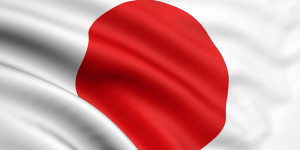The Japanese yen has ticked lower on Monday. In the North American session, USD/JPY is trading just above the 101 line. On the release front, Japanese Preliminary GDP posted a flat reading of 0.0%, shy of the estimate of 0.2%. Japanese Revised Industrial Production gained 2.3%, beating the estimate. In the US, the Empire State Manufacturing Index dropped 4.2 points, well below expectations. Tuesday promises to be busier, with the US releasing Building Permits and consumer inflation reports.
Japanese economy showed no growth in the second quarter, missing the forecast of 0.2%. This follows a respectable gain of 0.5% in Final GDP in the first quarter. In annualized terms, GDP posted a small gain of 0.2%. The weak reading will put further on pressure on Prime Minister Abe to resuscitate the languishing Japanese economy. Abe recently unveiled a JPY 28 trillion stimulus package, but it will be a tough job to convince skeptical consumers to open their wallets and increase spending. The BoJ has not taken any significant monetary measures in recent months and will face close scrutiny in September, when it releases an assessment of its stimulus program. If the bank continues to stay on the sidelines, the markets will conclude that the BoJ has given up on further monetary easing, leaving room for the yen to improve and possibly breaking below the symbolic 100 level.
The yen posted considerable gains on Friday, as US numbers wrapped up the week on a sour note. Core Retail Sales dropped 0.3%, while Retail Sales slipped to a flat 0.0%. There was no relief from PPI readings, which measure wholesale prices. PPI came in at -0.4% and Core PPI declined 0.3%. All four releases missed expectations and were lower than their previous readings. UoM Consumer Sentiment improved to 90.4 points, but this fell short of expectations. The soft PPI readings point to ongoing low inflation levels, well below the Federal Reserve’s target of about 2.0%. The Fed next meets in September to decide whether to raise interest rates. A soft GDP report last month had dampened expectations about a rate hike before 2017, but sharp employment numbers, led by a stellar NFP report, raised the odds of a September hike. However, Friday’s soft numbers have again dampened enthusiasm about a rate hike in September, and in all likelihood, the Fed will stay on the sidelines until December or even later.
USD/JPY Fundamentals
Sunday (August 14)
- 19:50 Japanese Preliminary GDP. Estimate 0.2%. Actual 0.0%
- 19:50 Japanese Preliminary GDP Price Index. Estimate 0.7%. Actual 0.8%
Monday (August 15)
- 00:30 Japanese Revised Industrial Production. Estimate 1.9%. Actual 2.3%
- 8:30 US Empire State Manufacturing Index. Estimate 2.1 points. Actual -4.2 points
- 10:00 US NAHB Housing Market Index. Estimate 60 points
- 16:00 US TIC Long-Term Purchases
Tuesday (August 16)
- 8:30 US Building Permits. Estimate 1.16M
- 8:30 US CPI. Estimate 0.0%
- 8:30 US Core CPI. Estimate 0.2%
*Key events are in bold
*All release times are EDT
USD/JPY for Monday, August 15, 2016

USD/JPY August 15 at 9:35 EDT
Open: 101.25 High: 101.45 Low: 100.85 Close: 101.05
USD/JPY Technical
| S3 | S2 | S1 | R1 | R2 | R3 |
| 97.78 | 98.95 | 99.71 | 101.20 | 102.36 | 103.73 |
- USD/JPY was flat in the Asian session and posted slight losses in European trade. The pair is showing limited movement in North American trade.
- 99.71 is a strong support level
- 101.20 is fluid and is currently a weak resistance line. It could see further action in the North American session
- Current range: 99.71 to 101.20
Further levels in both directions:
- Below: 99.71, 98.95 and 97.78
- Above: 101.20, 102.36, 103.73 and 104.99
OANDA’s Open Positions Ratio
In the USD/JPY ratio, long positions have a strong majority (71%), indicative of trader bias towards USD/JPY reversing directions and moving to higher ground.
This article is for general information purposes only. It is not investment advice or a solution to buy or sell securities. Opinions are the authors; not necessarily that of OANDA Corporation or any of its affiliates, subsidiaries, officers or directors. Leveraged trading is high risk and not suitable for all. You could lose all of your deposited funds.
